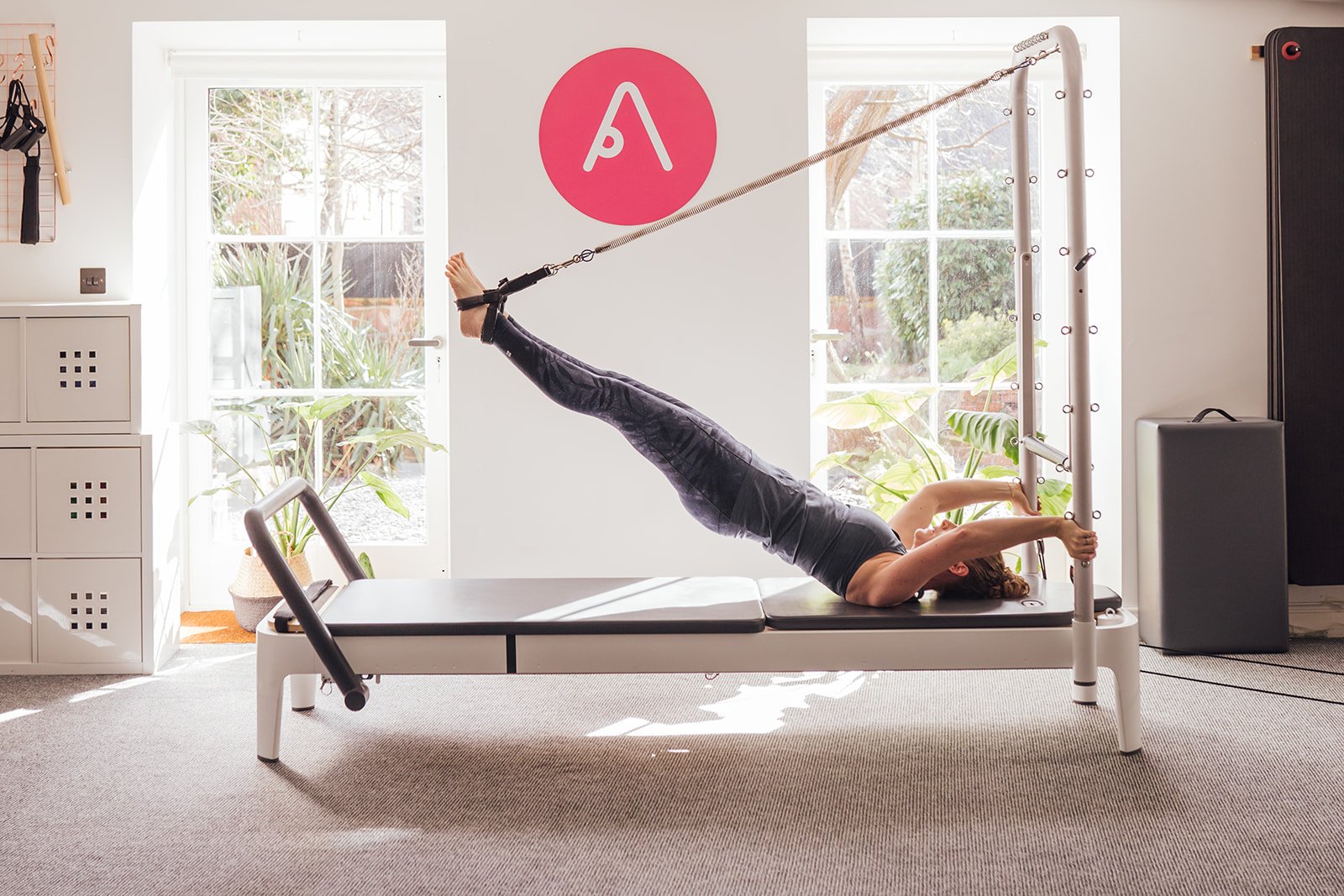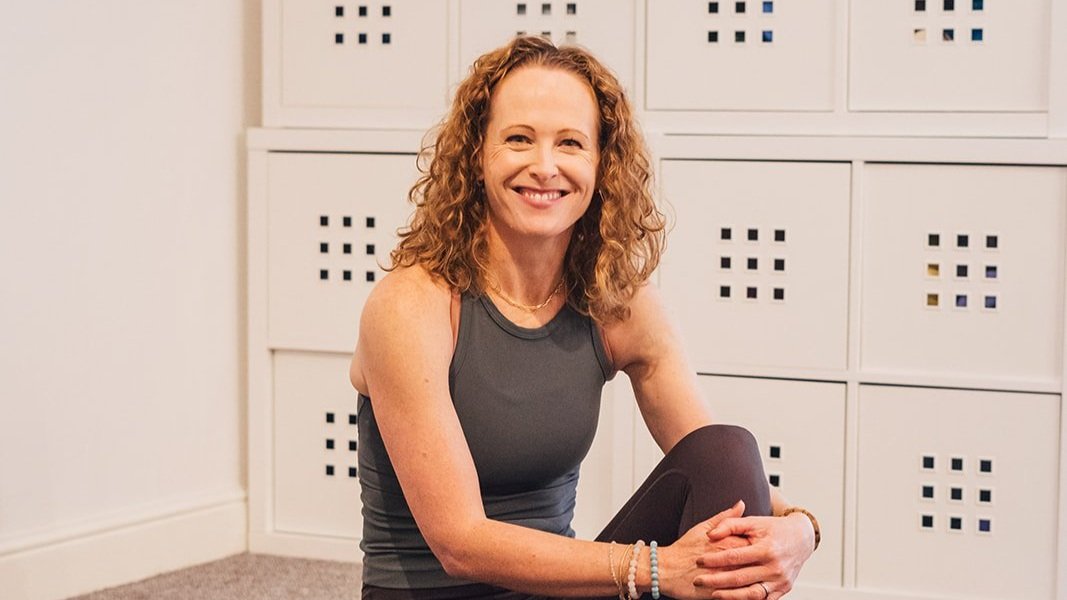Mat Pilates vs Reformer Pilates - which gives us more ‘connection’?
Let’s explore the difference in how we connect in Pilates on the mat vs the Pilates equipment.
In all movement, connection is important because it provides sensory feedback. When we run, our feet are connected to the ground, when we do a deadlift at the gym, we are connected to the ground and our arms connect to the weights. All of this connection gives our brain input. So what about Pilates?
In Pilates when we lie on the mat we have the ground supporting us but very little else, it’s just us and gravity so in the Pilates mat exercises we’re using just our body weight.
Rolling Like a ball - mat exercise
The hands connecting to the shins and shins to hands creates a ring of tensioning that gives the core control to roll back and rebalance again.
Hamstring III - Wunda Chair
Using the balls of the feet in deep plantar flexion (tip toes) and the hands pulling wide on the chair surface and the springs helps to lift the whole body up in a deep rounded spine position.
Working on the Pilates apparatus is different, we have our feet sometimes pushing against a fixed surface or a moving surface, our hands might be in loops pulling or pressing or we might be suspended by our hands and feet with little else for support. These changes in support and input for our brain constantly provide our nervous system and muscular system with a challenge which helps to build strength, promote good alignment and ultimately help us move well and feel good in our day-to-day lives.
So how we connect to the ground or the equipment is different but is one better than the other?
Truth, they’re just different, neither one is better than the other, because all Pilates is great (yes we know we’re biased)!
In a mat class, even though it’s just the ground and our body weight we are using, we can utilise the feedback that this provides us. Are our feet resting or are they pushing back into the ground to provide support? How is our hand placed to optimally support our shoulder and full body weight in the twist? Are we leaning into the hand and wrist or lifting up and out of the joint? It sounds nuanced, but it makes a tangible difference to our movement experience and how we distribute the energy in a movement and maximise this reduced feedback.
Kneeling sidekick - mat
The most advanced of the side-lying mat exercises because you’re supported by your hand and outer leg and hip. Complete integration in your whole body are needed here to create stability whilst your leg kicks
Using the reformer as an example, laid down on our back with the feet on the foot bar and pressing out with the feet, we have lots of elements we can connect to that give us feedback. We feel the carriage, the shoulder rests and the tension of the springs as well as the part of the foot that is pushing into the footbar. This input received from the carriage ultimately gives our brain more input and our body receives more support.
Magician on the Tower bar
This is an advanced exercise where the feet are in straps attached by springs and the arms are connected to the poles. It’s the arms integrating into the posts and legs into the springs that make the whole body connect to suspend yourself.
A great example of the nuances of connecting into the foot can be explored in footwork, if we push into the ball of the foot against load versus the heel of the foot it’ll help us to tune into the front and back of the leg, whether the load we feel is transferring directly through both feet and legs equally or if we feel imbalanced or off centre. This extra sensory feedback can be helpful if we’re struggling with pain or injury which is why we’ll always use the Pilates apparatus in our 1:1 and small groups.
Lateral flexion - the chair
The heel of the hand and the outer hip connect to the chair to create a side plank shape whilst the arm and leg move.
In summary
The Pilates apparatus acts as a support system for the body by helping assist it in proper form. It adds resistance to the Pilates exercises via the use of the springs/pulleys that form part of the machine. Extra springs can be added to build strength in the bigger muscle groups, or lower springs can be utilised to challenge the stabilising muscles.
This means that the intensity can be varied considerably from one person to the next, making the apparatus incredibly versatile to use. This capability, combined with the support afforded by the resistance the machines provide, allows people of all capabilities (including those with limited range of movement or injuries) to safely complete exercises.
You can do more exercises on the apparatus compared to a mat and it gives you the option of performing exercises in lots of different body positions, from your back, side, stomach, being seated and also on your feet or knees.
The Twist - mat
The Twist is an advanced mat exercise. Only your hand and outer and inner foot are connected to the floor, it’s an interaction between the hand and the ground, the rotation of the pelvis and torso and pivot through the foot that creates the movement. It’s helpful to think of the hand sending the ground away, the pelvis rising in opposition and the back foot pivoting.
A traditional Pilates mat class will work your legs, stomach, lower and upper back muscles. On the mat, your body weight provides resistance against gravity, making the workout more challenging in many cases. You must be in full control of your body, rather than relying on the assistance or support of the springs and cables of an apparatus. Mat work is a great option for beginners because of its emphasis on learning how to control your muscles during exercises.
Long stretch series - Reformer
Hands connecting to the foot bar and toes tucked under on shoulder rests to create a plank shape with the carriage moving underneath.
In mat classes, you’re using your body all the time, the equipment isn’t there to assist or support you. While doing Pilates on a mat instead of a Reformer may not seem as exciting or challenging, many clients see results - improved strength, posture, agility, flexibility, and toned muscles - within just a few mat sessions.
Try our free taster class….
Our LHP At Home online classes are all mat-based, some with props to enhance connection. If you enjoy the free taster class, join our Pilates At Home membership for more! We’d love to have you
See you in the studio or online soon!
Lauren x
Owner and Pilates teacher, Lauren Hilton Pilates, Shrewsbury
Lauren Hilton Pilates is a boutique Pilates studio specialising in mindful Pilates movement. Located in the heart of Shrewsbury our fully equipped studio has the ultimate Pilates experience for you.
Our classes are booked on a termly basis (and fill up quickly). To be one of the first to receive our booking alerts, subscribe to our emails.









